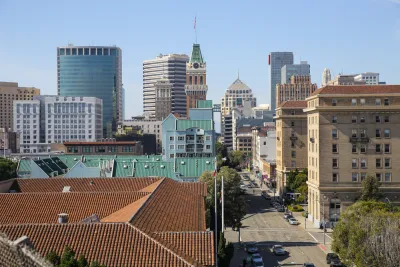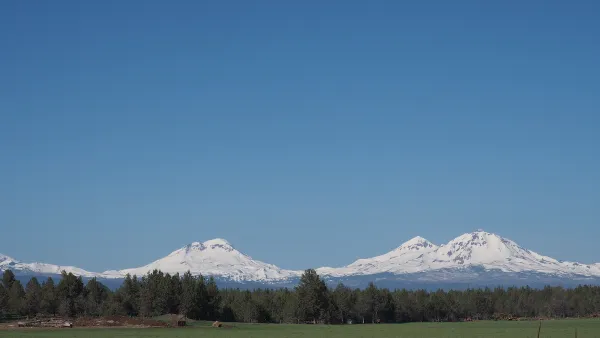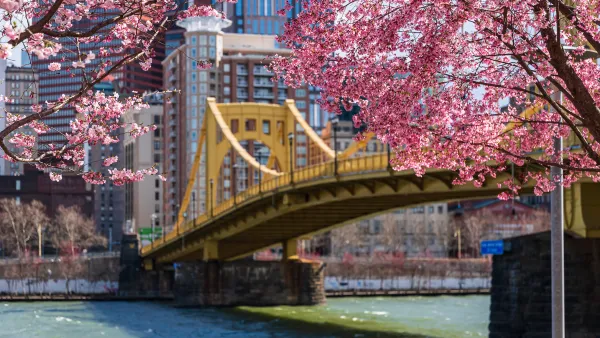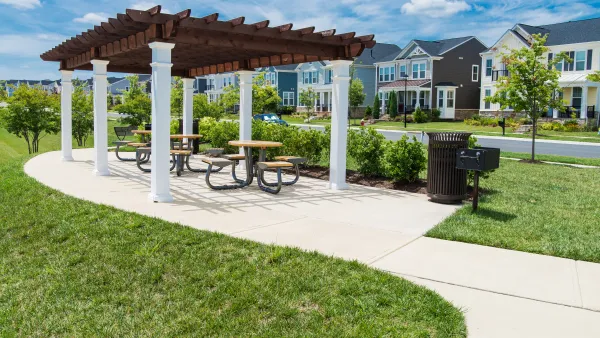Thirty community organizations have come together to deliver a response to Oakland's RFP for a comprehensive planning consultant. It's one of three proposals, but certainly the only one with cartoons.

Every Tuesday and Thursday, from 4 p.m. to 6:30 p.m., Nakia Woods has a meeting to help plan for the future of Oakland.
Woods is the program director at HOPE Collaborative — the acronym stands for “Health for Oakland’s People and Environment.” Those are the regular meeting times for the group’s Youth Action Board, which for the past ten years has brought together Oaklanders aged 14 to 24 from disinvested and marginalized neighborhoods across the Bay Area city.
“Houseless folks, queer folks, folks of color, young people, folks that are differently abled, there’s this misconception that these folks don’t really care about the general plan or city planning process,” says Woods.
Woods recently witnessed Youth Action Board members and other marginalized groups coming together around planning for the future of their neighborhoods. HOPE Collaborative was one of 12 community-based organizations who partnered with the city to lead the East Oakland Neighborhoods Initiative.
From November 2018 to June 2019, the East Oakland Neighborhoods Initiative organized a series of 20 meetings in six neighborhoods across what’s known as “Deep East Oakland” — all historically working-class, predominantly Black and brown neighborhoods that have born the brunt of earlier city planning decisions that have kept them in the path of toxic fumes, water contamination and other pollution. The results were a laundry list of 89 projects and policies residents would like to see funded and implemented, as well as closer connections between all 12 participating organizations.
Oakland now has a once-in-a-generation opportunity to call upon networks and conversations like those, all across the city and not just in Deep East Oakland, as the Oakland planning bureau begins the process of updating the city’s General Plan. It’s a document that guides city zoning and land use decisions and capital investments for the next few decades. The general plan determines what can be built where, shaping almost every aspect of a city’s built environment. Oakland’s current general plan was adopted back in 1998, though parts of it were updated in 2013.
HOPE Collaborative and more than 30 other Oakland community-based groups joined forces to submit “The Oakland People’s Plan,” a joint proposal in response to the city’s RFP in search of an outside consulting group to lead the General Plan update process. The collective, cobbled together in just a few weeks, was one of three finalists to deliver a detailed presentation to city planning staff in July. It’s almost certainly the only one with cartoons.
“Honestly it was a little bit overwhelming, learning about what the general plan is, learning about the possibilities of what could happen, learning about the implications of a general plan that is not equitable,” says Woods. “But business as usual has not worked for us. Business as usual really to me means non-authentic engagement or engagement only with people who are already at the table and involved with city processes and don’t understand the complexities that Oakland residents face, don’t understand racial equity, don’t understand gentrification and having to move out of a city some have called home for generations.”
FULL STORY: Comprehensive Planning Sucks. These Oaklanders Want to Make It Better.

Analysis: Cybertruck Fatality Rate Far Exceeds That of Ford Pinto
The Tesla Cybertruck was recalled seven times last year.

National Parks Layoffs Will Cause Communities to Lose Billions
Thousands of essential park workers were laid off this week, just before the busy spring break season.

Retro-silient?: America’s First “Eco-burb,” The Woodlands Turns 50
A master-planned community north of Houston offers lessons on green infrastructure and resilient design, but falls short of its founder’s lofty affordability and walkability goals.

Test News Post 1
This is a summary

Analysis: Cybertruck Fatality Rate Far Exceeds That of Ford Pinto
The Tesla Cybertruck was recalled seven times last year.

Test News Headline 46
Test for the image on the front page.
Urban Design for Planners 1: Software Tools
This six-course series explores essential urban design concepts using open source software and equips planners with the tools they need to participate fully in the urban design process.
Planning for Universal Design
Learn the tools for implementing Universal Design in planning regulations.
EMC Planning Group, Inc.
Planetizen
Planetizen
Mpact (formerly Rail~Volution)
Great Falls Development Authority, Inc.
HUDs Office of Policy Development and Research
NYU Wagner Graduate School of Public Service




























